Wisconsin Fruit Crop Scouting Report: April 25, 2025
Hello fruit growers, we are excited to share fruit scouting updates with you this year through the Wisconsin Fruit Newsletter. This newsletter will cover apple and grape phenology, general scouting observations, and includes an overview of degree day accumulation from April 1.
Grapes
Phenology
At the West Madison Agricultural Research Station (WMARS) in Madison, WI, buds average around E-L* stage 2 (Bud scales opening) on Petite Pearl and Brianna to stage 3 (Wooly bud +/- green showing) in Frontenac, Marquette and LaCrescent. At the Peninsular Agricultural Research Station (PARS) all cultivars are at bud swell stage. We expect buds will move fast this next 5 days with the warm temperatures forecasted, so if you are still dormant pruning, planned to be done within the next week. If you have long pruned to delay bud break and skip any potential frost damage, you should consider doing your final pruning within the next 2 weeks, so that you avoid developmental delays.
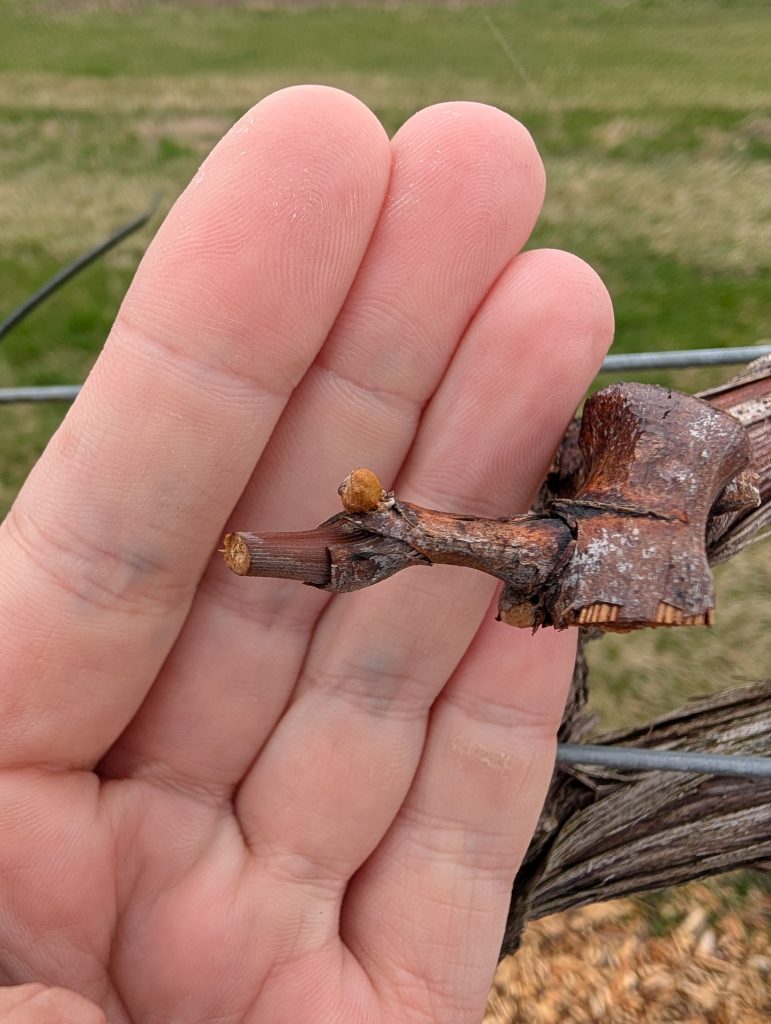
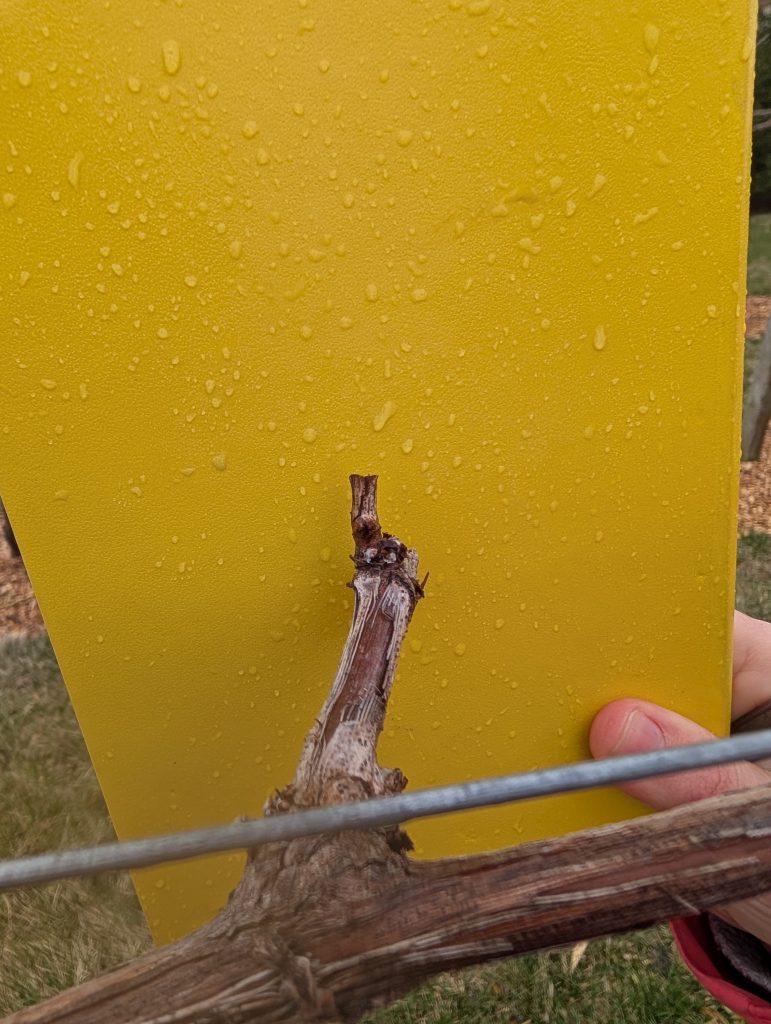
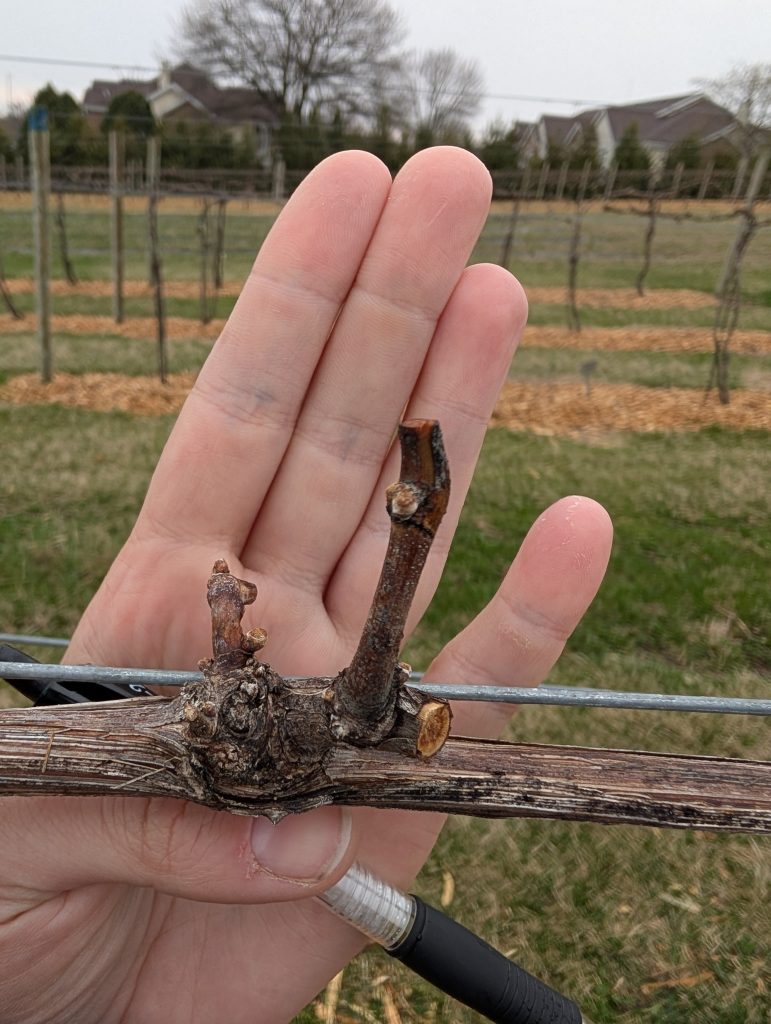
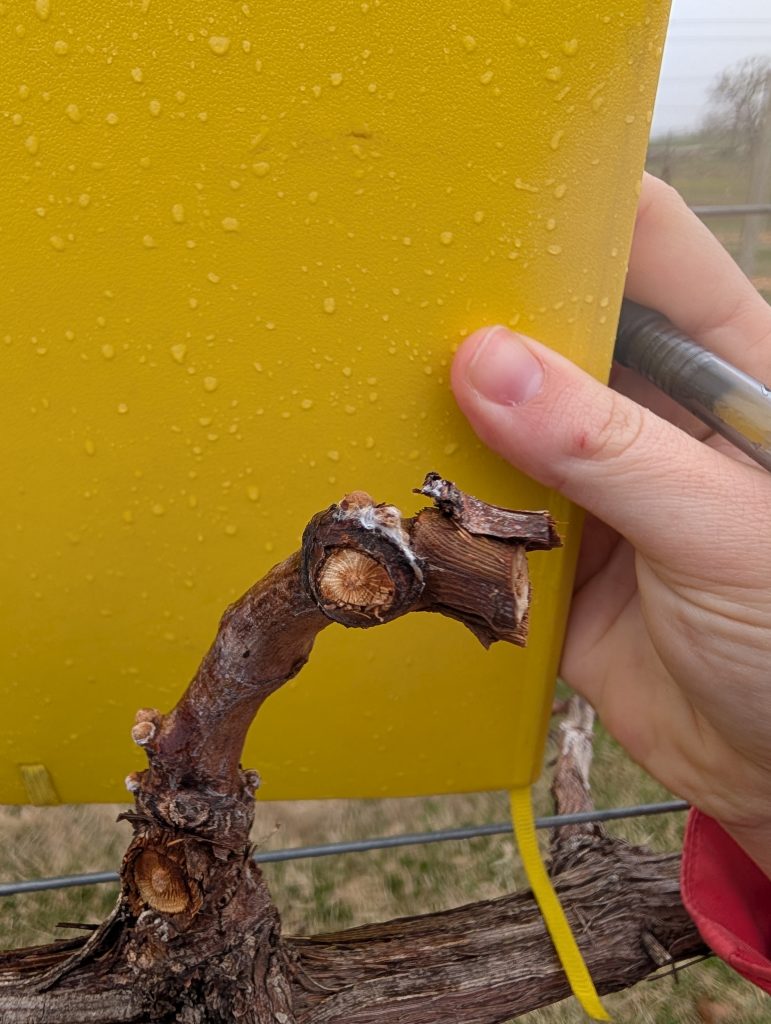
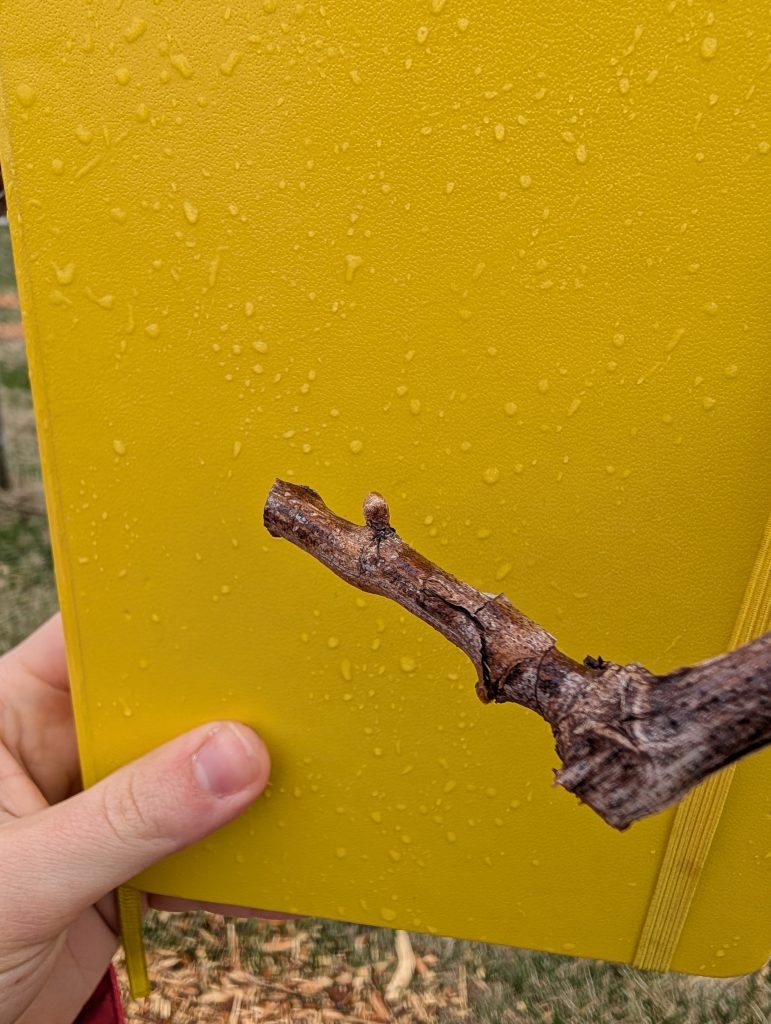
There were a few rain events in the past week in areas around Wisconsin. The days are becoming warmer, but night time temperatures are staying cool. We are anticipating budburst in the next week or so. We are still keeping an eye on the weather for any possibility of a late frost.
*E-L stands for Eichhorn-Lorenz growth stages scale to describe grapevine development.
Growing Degree Day (GDD) Accumulations
Below displays the GDD accumulations from April 1 through April 24 for the current and last two seasons. Our current season appears to be slightly behind compared to 2024. This data is collected using the NEWA website. You can visit their “About degree days” page to learn more about the concept of degree days as well as the formulas utilized for calculations.
Growing degree day (GDD) accumulation as of April 24, 2025 (April 1 start date; base 50°F BE*) at the WMARS and PARS.
| Location | 2025 | 2024 | 2023 |
| WMARS | 59 | 81 | 114 |
| PARS | 89 | 44 | 12 |
*BE = Baskerville-Emin calculation method
Pests and other considerations
There were no signs of diseases or insect pests at WMARS. As the temperatures continue to warm, we will be on the lookout. Dandelions and other weeds are starting to emerge, and we anticipate an herbicide application at the research station vineyards. Special attention should be paid to flea beetle and cutworms that may be feeding on developing buds, you can refer back to this article for scouting and management recommendations. Once buds burst open, there is no need to treat for flea beetle and cutworms.
Apples
Phenology
Early apple cultivars have reached first pink (Zestar, Ida Red) in southern Wisconsin (Fuji, Honeycrisp, McIntosh), while later cultivars have reached ½ inch green to tight cluster stage in southern Wisconsin (Fuji, Honeycrisp, McIntosh). Remember to record 50% green tip dates at several blocks/cultivars in your orchard, to use in the NEWA models this summer. In terms of degree day accumulation, we are tracking growing degree days (DD 43 °F BE) to monitor bud development in apples. For early cultivars in Southern Wisconsin we expect to be at full pink by the mid/end of next week.
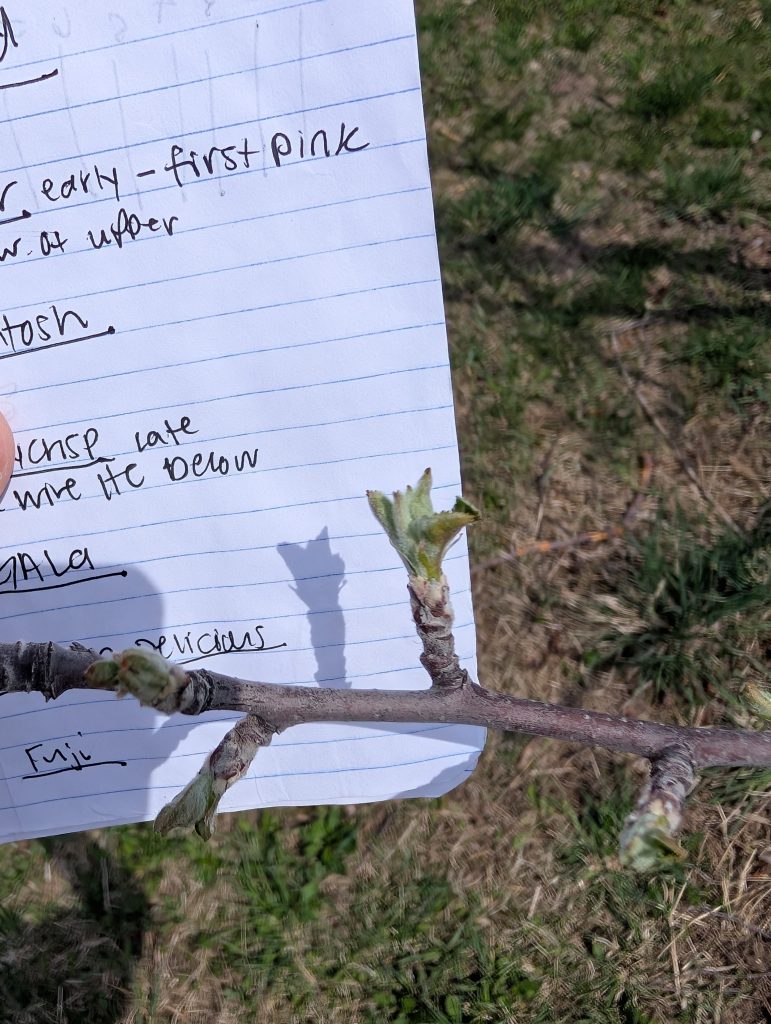
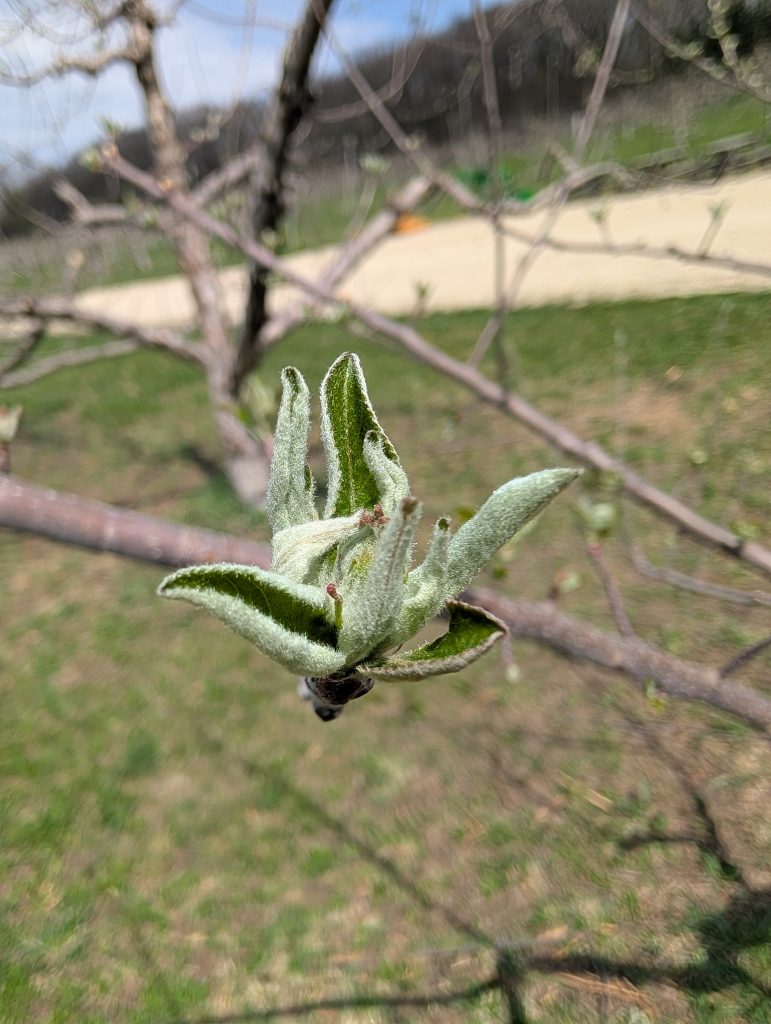
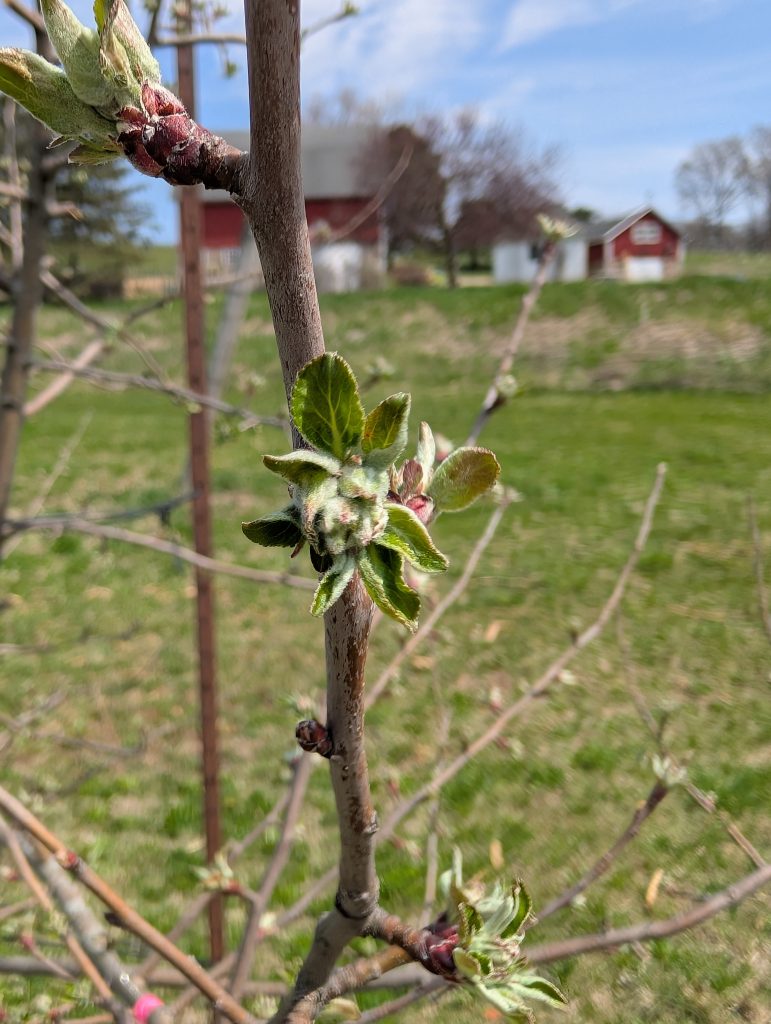
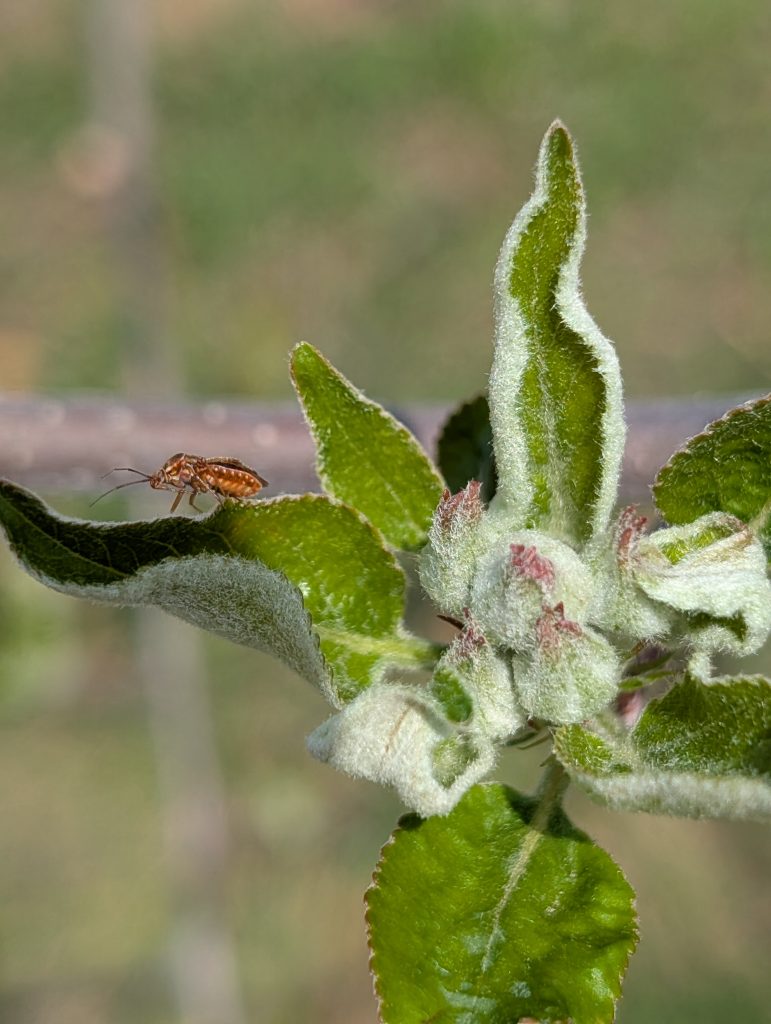
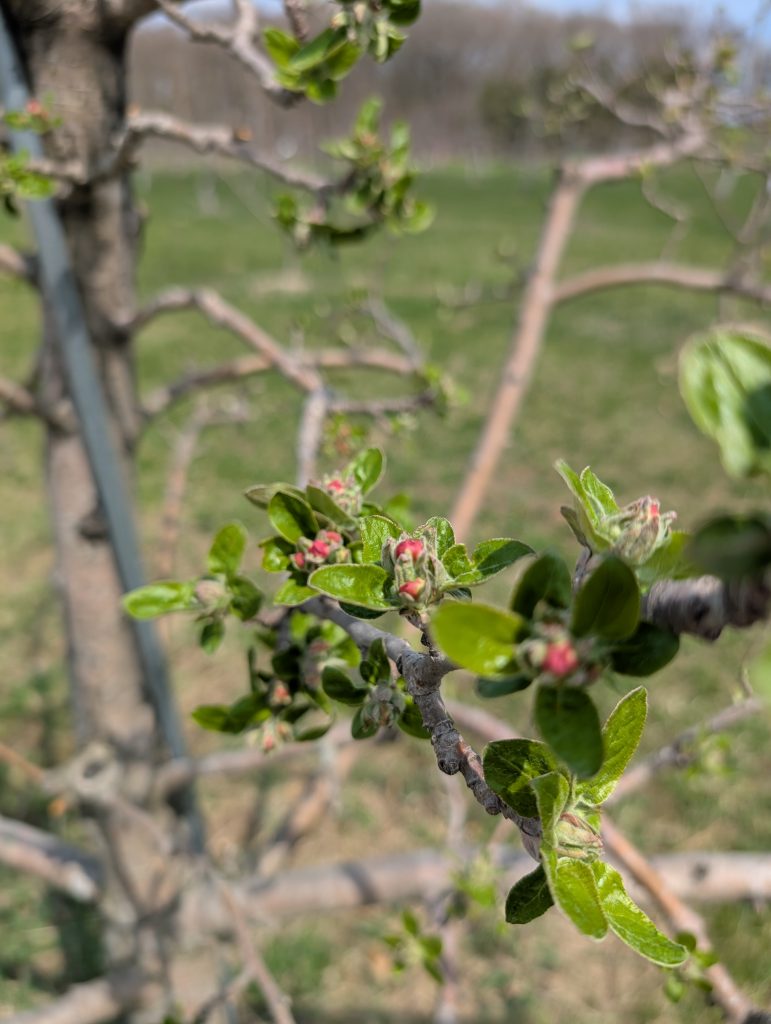
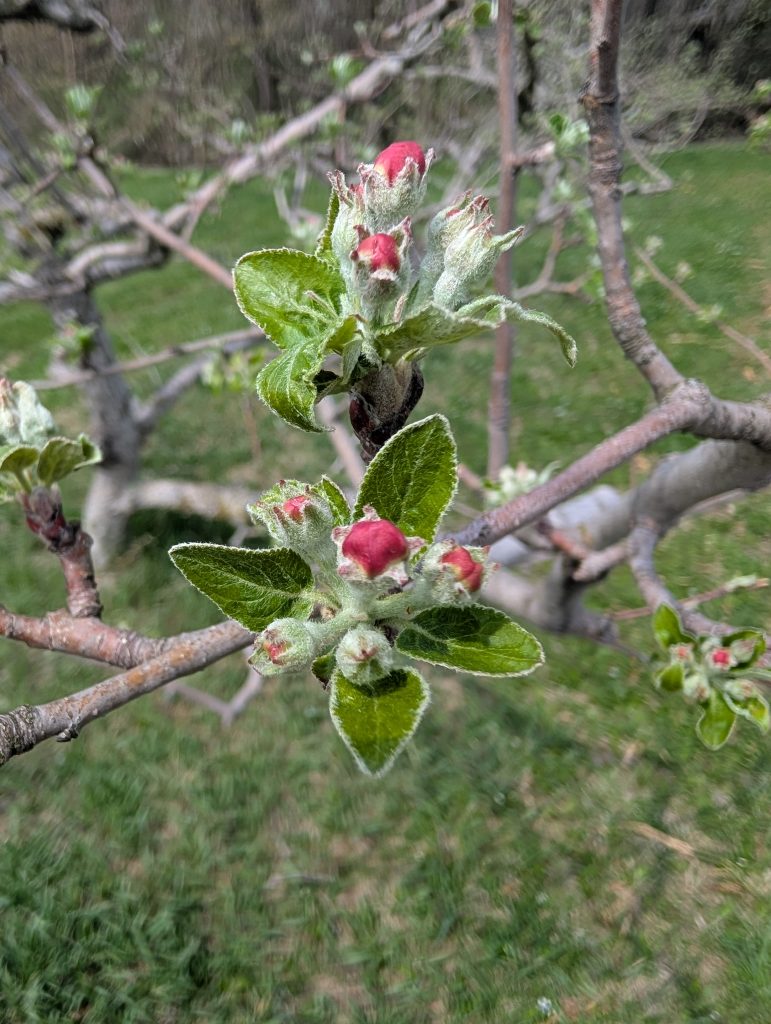
Growing Degree Day (GDD) Accumulations
Similar to grapes, degree day accumulation (Base 43°F BE*) from January 1 is slightly behind compared to last year in central and Southern Wisconsin. While degree day accumulation in Northern Wisconsin and near the Great Lakes are a bit further behind (~70-100 GDD) compared to last year. This may translate to a wider variance in phenology across the state. This data is collected using the NEWA website. You can visit their “About degree days” page to learn more about the concept of degree days as well as the formulas utilized for calculations.
Growing degree day (GDD) accumulation in 2023, 2024 and 2025 as of April 24 (January 1 start date; base 43°F BE*).
| Location | 2025 | 2024 | 2023 |
| Verona WMARS | 254 | 287 | 219 |
| Gays Mills | 276 | 317 | 205 |
| Eau Claire | 195 | 265 | 165 |
| Door County PARS | 94 | 161 | 152 |
| Fond Du Lac | 203 | 302 | 225 |
| Racine | 217 | 317 | 249 |
*BE = Baskerville-Emin calculation method
Pests and other considerations:
- Consider testing your frost protection devices: If you have frost protection like wind machines, you should be checking and testing them to be prepared in case you need to use them.
- If you have a history of bitter pit in your Honeycrisp orchard, consider applying Apogee at pink to reduce bitter pit incidence.
- Early apple varieties are expected to begin blooming by the end of this month. Now is the time to plan your streptomycin and Apogee applications (or OMRI materials for organic orchards) to protect against fire blight, and to monitor disease forecasting models like NEWA for potential infection events. Stay tuned for a fire blight management article in next week’s newsletter.
- Continue monitoring for early season insects, including mites, aphids and San Jose scale. Early-season oil applications may continue up until pink. A 10x hand lens is helpful for identification.
- White or yellow sticky traps may be hung in the next week or so for locations with a history of tarnished plant bug.
- Locations with a history of early-lepidopteran larval populations may begin scouting and consider hanging redbanded leafroller pheromone traps. Larvae will feed on leaves and flowers as they continue to expand.
- During bloom, delay insecticide applications until petal fall to protect pollinators.
- Mating disruption: If you have not done so yet, hang codling moth mating disruption dispensers prior to emergence.
- Need insect insect lures or traps? Place your order here: https://www.greatlakesipm.com/
Cheers to another year!
This article was posted in Apples, Disease, Grapes, Insects and tagged Amaya Atucha, Apples, disease, gdd, Grapes, growing degree day accumulations, Growing Degree Days, Josie Dillon, Leslie Holland, pests, phenology, Wisconsin Fruit Crop Scouting Report.
